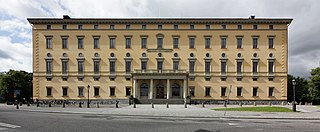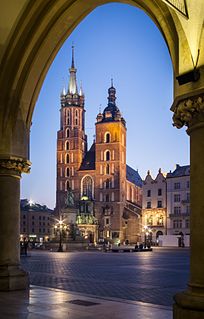 W
WIn urban design, a terminating vista is a building or monument that stands at the end or in the middle of a road, so that when one is looking up the street the view ends with the site.
 W
WAmar Jawan Jyoti is an Indian memorial constructed after the Indo-Pakistani War of 1971 to commemorate the martyred and unknown soldiers of the Indian Armed Forces who died during the war. Amar Jawan Jyoti consists of a marble pedestal on which a cenotaph is situated. "Amar Jawan" is scripted in gold on all four sides of the cenotaph and on top, a L1A1 Self-Loading Rifle stands on its barrel with a helmet of the Unknown Soldier on top. The pedestal is bound by four urns, one of which holds a continuously burning flame.
 W
WThe Angel of Independence, most commonly known by the shortened name El Ángel and officially known as Monumento a la Independencia, is a victory column on a roundabout on the major thoroughfare of Paseo de la Reforma in downtown Mexico City.
 W
WThe Arc de Triomf is a triumphal arch in the city of Barcelona in Catalonia, Spain. It was built by architect Josep Vilaseca i Casanovas as the main access gate for the 1888 Barcelona World Fair. The arch crosses over the wide central promenade of the Passeig de Lluís Companys, leading to the Ciutadella Park that now occupies the site of the world fair. It is located at the northern end of the promenade, facing the Passeig de Sant Joan.
 W
WArch 22 is a commemorative arch on the road into Banjul in the Gambia. It was built in 1996 to mark the military coup d'état of July 22, 1994, through which Yahya Jammeh and his Armed Forces Provisional Ruling Council overthrew the democratically elected Gambian government.
 W
WThe Arch of Constantine is a triumphal arch in Rome dedicated to the emperor Constantine the Great. The arch was commissioned by the Roman Senate to commemorate Constantine's victory over Maxentius at the Battle of Milvian Bridge in AD 312. Situated between the Colosseum and the Palatine Hill, the arch spans the Via triumphalis, the route taken by victorious military leaders when they entered the city in a triumphal procession. Dedicated in 315, it is the largest Roman triumphal arch, with overall dimensions of 21 m (69 ft) high, 25.9 m (85 ft) wide and 7.4 m (24 ft) deep. It has three bays, the central one being 11.5 m (38 ft) high and 6.5 m (21 ft) wide and the laterals 7.4 m (24 ft) by 3.4 m (11 ft) each. The arch is constructed of brick-faced concrete reveted in marble.
 W
WThe Arch of Triumph is a triumphal arch in Pyongyang, North Korea. It was built to commemorate the Korean resistance to Japan from 1925 to 1945. It is the second tallest triumphal arch in the world, after Monumento a la Revolución in Mexico, standing 60 m (197 ft) high and 50 m (164 ft) wide.
 W
WArcul de Triumf is a triumphal arch located in the northern part of Bucharest, on the Kiseleff Road.
 W
WCarolina Rediviva is the main building of the Uppsala University Library in Uppsala, Sweden. The building was begun in 1820 and completed in 1841. The original architect was Carl Fredrik Sundvall. Later additions to the building have been designed by Axel Johan Anderberg and Peter Celsing. The name, literally "Carolina Revived", was given in remembrance of the old Academia Carolina building, which had functioned as the university library for most of the 18th century. Carolina Rediviva is the oldest and largest university library building in the country. It is also the site where the Codex Argenteus and the Cancionero de Upsala are kept.
 W
WGothenburg Museum of Art is located at Götaplatsen in Gothenburg, Sweden.
 W
WHallgrímskirkja is a Lutheran parish church in Reykjavík, Iceland. At 74.5 metres (244 ft) high, it is the largest church in Iceland and among the tallest structures in the country. The church is named after the Icelandic poet and clergyman Hallgrímur Pétursson (1614–1674), author of the Passion Hymns.
 W
WThe India Gate is a war memorial located astride the Rajpath, on the eastern edge of the "ceremonial axis" of New Delhi, formerly called Kingsway. It stands as a memorial to 70,000 soldiers of the British Indian Army who died in between 1914 and 1921 in the First World War, in France, Flanders, Mesopotamia, Persia, East Africa, Gallipoli and elsewhere in the Near and the Far East, and the third Anglo-Afghan War. 13,300 servicemen's names, including some soldiers and officers from the United Kingdom, are inscribed on the gate. Designed by Sir Edwin Lutyens, the gate evokes the architectural style of the triumphal arch such as the Arch of Constantine, in Rome, and is often compared to the Arc de Triomphe in Paris, and the Gateway of India in Mumbai.
 W
WThe Victor Emmanuel II National Monument or Vittoriano, called for the synecdoche Altare della Patria, is a national monument built in honour of Victor Emmanuel II, the first king of a unified Italy, located in Rome, Italy. It occupies a site between the Piazza Venezia and the Capitoline Hill. It is currently managed by the Polo Museale del Lazio and is owned by the Ministry of Cultural Heritage and Activities.
 W
WThe National Museum (NM) is a Czech museum institution intended to systematically establish, prepare, and publicly exhibit natural scientific and historical collections. It was founded in 1818 by Kašpar Maria Šternberg. Historian František Palacký was also strongly involved in the foundation of the museum.
 W
WThe Obelisco de Buenos Aires is a national historic monument and icon of Buenos Aires. Located in the Plaza de la República in the intersection of avenues Corrientes and 9 de Julio, it was erected in 1936 to commemorate the quadricentennial of the first foundation of the city.
 W
WThe Palace of the Parliament, also known as the Republic's House or People's House, is the seat of the Parliament of Romania, located atop Dealul Spirii in Bucharest, the national capital. The Palace reaches a height of 84 metres (276 ft), has a floor area of 365,000 square metres (3,930,000 sq ft) and a volume of 2,550,000 cubic metres (90,000,000 cu ft). The Palace of the Parliament is the heaviest building in the world, weighing about 4,098,500,000 kilograms.
 W
WThe Palace of Justice of Brussels or Law Courts of Brussels is the most important court building in Belgium. It is located on the Place Poelaert/Poelaertplein in the Marolles/Marollen district of Brussels. Built between 1866 and 1883 by the celebrated architect Joseph Poelaert in the eclectic style, the building is reputed to be the largest constructed in the 19th century and is a notable landmark of Brussels. The total cost of the construction, land and furnishings was somewhere in the region of 45 million Belgian francs.
 W
WPatuxai is a war monument in the centre of Vientiane, Laos, built between 1957 and 1968. The Patuxai was dedicated to those who fought in the struggle for independence from France. In romanising the name from the Laotian language, it is variously transliterated as Patuxai, Patuxay, Patousai and Patusai. It is also called Patuxai Arch or the Arc de Triomphe of Vientiane as it resembles the Arc de Triomphe in Paris. However, it is typically Laotian in design, decorated with mythological creatures such as the kinnari .
 W
WThe Royal Palace in Oslo was built in the first half of the 19th century as the Norwegian residence of the French-born King Charles III John of Norway, who reigned as king of Norway and Sweden. The palace is the official residence of the current Norwegian monarch while the Crown Prince resides at Skaugum in Asker west of Oslo.
 W
WSaint Mary’s Basilica is a Brick Gothic church adjacent to the Main Market Square in Kraków, Poland. Built in the 14th century, its foundations date back to the early 13th century and serve as one of the best examples of Polish Gothic architecture. Standing 80 m (262 ft) tall, it is particularly famous for its wooden altarpiece carved by Veit Stoss (Wit Stwosz). Some of its monumental polychrome murals were designed by Poland's leading history painter, Jan Matejko (1898-1891). In 1978 it became a UNESCO World Heritage Site alongside the Historic Centre of Kraków.
 W
WThe Papal Basilica of Saint Peter in the Vatican, or simply Saint Peter's Basilica, is a church built in the Renaissance style located in Vatican City, the papal enclave that is within the city of Rome.
 W
WSt. Florian's Gate or Florian Gate in Kraków, Poland, is one of the best-known Polish Gothic towers, and a focal point of Kraków's Old Town. It was built about the 14th century as a rectangular Gothic tower of "wild stone", part of the city fortifications against Turkish attack.
 W
WWenner-Gren Center is a tower and building complex in Vasastaden, Stockholm, Sweden. The building was constructed 1959–1961, and opened in 1962.